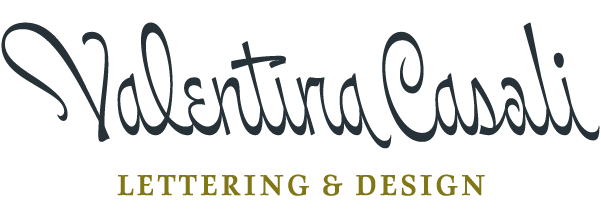Alfabeti Modernisti
For years, typographer and connoisseur Luca Lattuga — a senior member of Anonima Impressori — has been collecting and cataloging modernist wood and some metal types produced in Italy from the 1930s–1940s.
Now, he is bringing his research to light in a forthcoming book, Alfabeti Modernisti Italiani (soon to be published by Lazy Dog Press in 2026). CAST is reviving some of the most remarkable type designs he has discovered to complement his work, transforming them into digital fonts.
Xilografia di Verona catalog, scan from Luca Lattuga’s collection.
AM Majella
Majella is a lowercase-only, connected script typeface that merges handwriting with geometric sans-serif principles in an unconventional way. Featuring a strong geometric structure, a large x-height, and no contrast between thick and thin strokes, Majella embodies a bold, rationalist aesthetic. Its proportions are strictly based on circular forms, while its entry and exit strokes — angled at nearly 45° — create a dynamic sense of movement.
Named after the Majella massif in Italy’s central Apennines, this typeface was originally produced as a wood type by Xilografia di Verona between 1937 and 1939. It was available in three sizes — 3, 4, and 5 lines (equivalent to 36, 48, and 60 points). A nearly identical design, called Volturno, appeared in a 1941 catalog from Xilografia Italiana. The popularity of such letterforms in the 1930s is evident in the Vibram logo, which was featured on the Carrarmato ("tank" in English)—the first rubber mountaineering sole, introduced in 1937 by Italian alpinist and entrepreneur Vitale Bramanti.
No uppercase available. Scan from Luca Lattuga’s collection.
A digital revival with new options
The AM Majella digital revival remains faithful to the original lowercase design while introducing a newly crafted uppercase set. These uppercase letters are inspired by the original numerals, which were included in the type’s original character set along with punctuation marks. However, unlike the lowercase letters, the figures and capitals are highly condensed, do not follow the same ductus, and do not connect—neither to each other nor to the lowercase.
I refined the lowercase connections, addressing inconsistencies where some letters did not join smoothly. Thanks to OpenType technology, the typeface ensures a seamless text-composition experience. The connecting strokes adapt automatically based on their position within a word—whether at the beginning, middle, or end—allowing for fluid, natural-looking connections.
I found a workaround by applying the feature to the standard ligature instead of the contextual alternates, ensuring that the letters connect automatically in software like InDesign.













